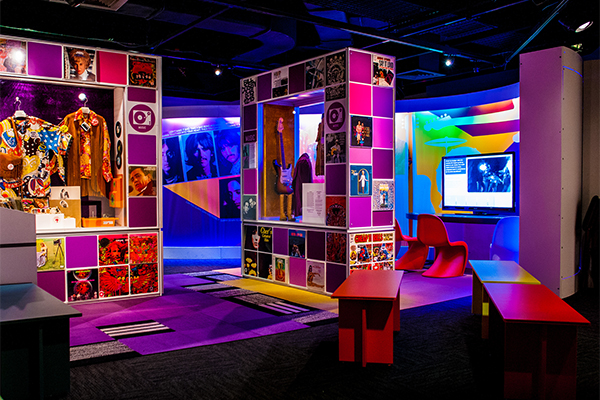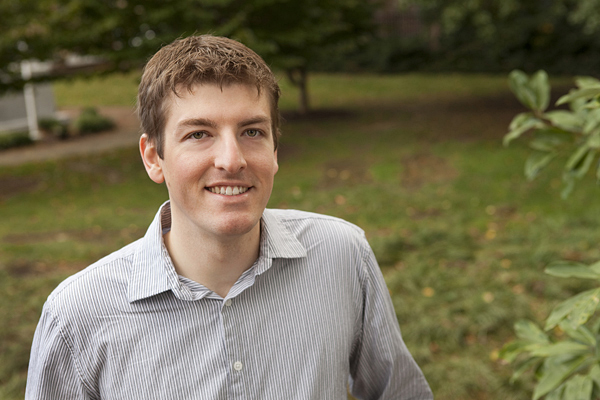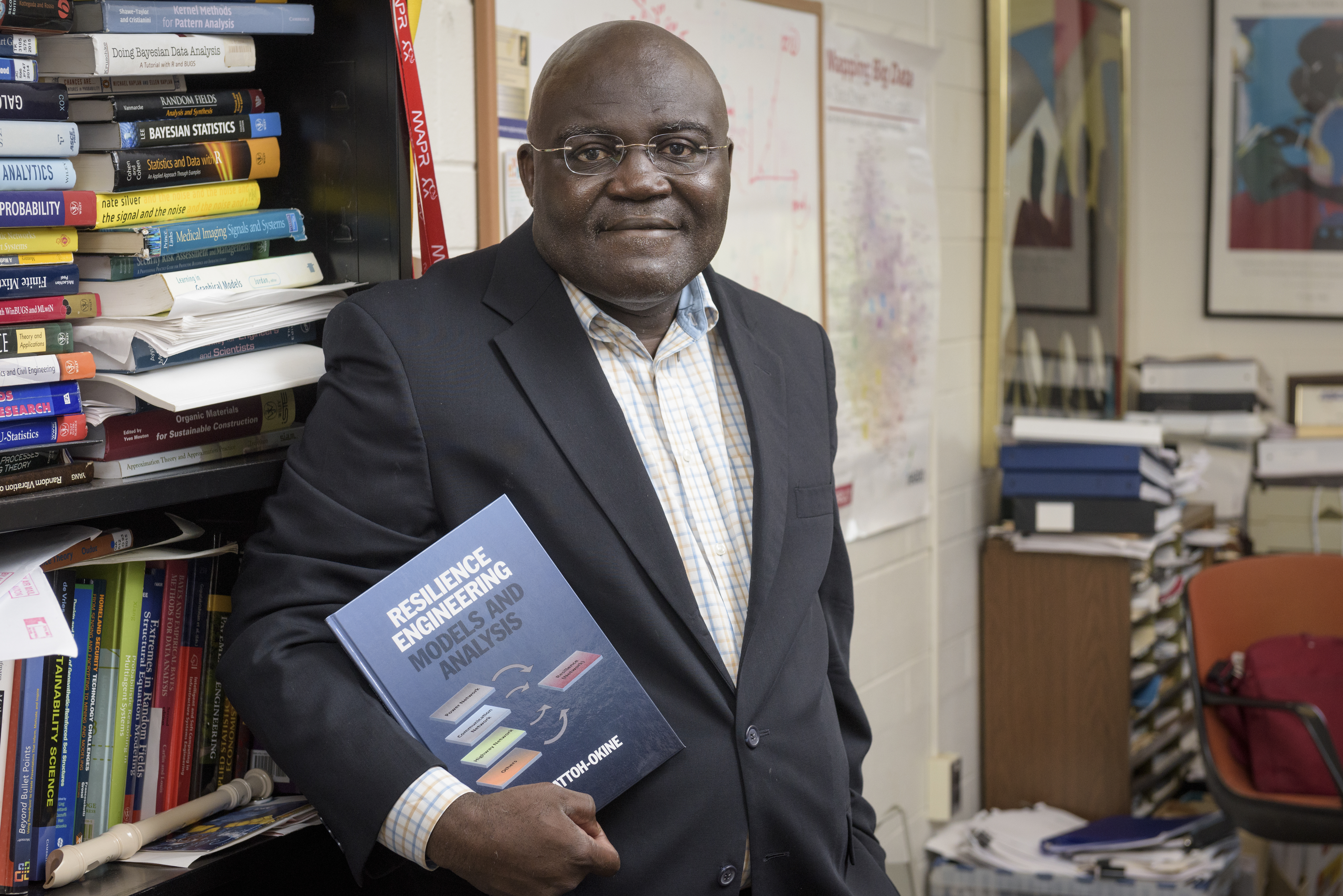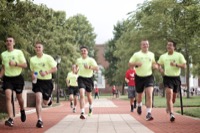1968
UD grad student contributes to '1968' exhibit at Constitution Center
8:13 a.m., July 9, 2013--When visitors cross the threshold of “The 1968 Exhibit” now on view at the National Constitution Center in Philadelphia, they return to a year that helped shape the modern era with a singular intensity.
Marred by the murders of the Rev. Dr. Martin Luther King Jr. and Sen. Robert F. Kennedy, 1968 also saw state and national military forces deployed in the jungles of Vietnam and on the streets of several major American cities.
People Stories
'Resilience Engineering'
Reviresco June run
As cities burned and American casualties in the war continued to rise, singers, songwriters and musicians of all political and cultural persuasions were turning out tunes that have since become a part of the great American songbook.
John Vanek, a graduate student in the University of Delaware’s Department of History, has made it possible for visitors to the exhibit to sample some of those sounds and view the artistic designs that accompanied them in the form of album covers and posters.
“I was a contributor to the exhibit’s Music Lounge,” Vanek said. “I was involved in acquiring the LPs and writing the interactive music quiz — The Music Trip — that visitors can take.”
Notable albums for 1968 include Waiting for the Sun by the Doors, Electric Ladyland by Jimi Hendrix, the Beatles (White Album), Love Child by Diana Ross and the Supremes, Lady Soul by Aretha Franklin, In-A-Gadda-Da-Vida, by Iron Butterfly and Johnny Cash At Folsom Prison.
The Music Trip Lounge reverberates with the spirit of those days, sporting rock-star memorabilia including original concert tickets, posters and autographs, while giving visitors a chance to design and share their own album cover creations.
A native of the Minneapolis-St. Paul area, Vanek’s involvement with the exhibit began after graduating from the University of Wisconsin with a bachelor of science degree in history in 2008.
“A former college roommate connected me to Brian Horrigan, curator at the Minnesota Historical Society,” Vanek said. “They were just starting their research for a potential exhibit aimed at the baby boomers and 1968, the year that that generation came of age.”
Hired as a special research assistant and developer for the musical aspects of the exhibit, Vanek also contributed a chapter on the music of 1968 to The 1968 Project: A Nation Coming of Age, by the Minnesota Historical Society staff.
Compiled by Elizabeth Ault and published by the Minnesota Historical Society Press, the companion book to the exhibit features an introduction by Horrigan and an epilogue by author and journalist Brad Zellar.
“I was amazed at the sheer volume of American and world-changing events in everything from pop and consumer culture to the fight against poverty and the rise of the feminist movement,” Vanek said. “There was also an international consciousness, made possible by ever-expanding mass media, with people being especially aware of things like the Beatles going to India, Walter Cronkite reporting on the Vietnam War and the live radio broadcast of Bobby Kennedy’s assassination at the hands of a Palestinian immigrant.”
Now considered cinema classics, films in 1968 ranged from 2001: A Space Odyssey, The Graduate and Planet of the Apes to Rosemary’s Baby and Funny Girl.
Vanek, who recently led a group of UD graduate students through the exhibit, said he also enjoyed some of the more colorful aspects of the year’s material culture, from consumer packaging to album covers and industrial designs.
Research interests for Vanek include studying the underlying business structures that made an international music culture possible and the cultural effects of this exchange on the United States in the middle of the 20th century.
“My most recent research for a graduate course was on Nigerian drummer Babatunde Olatunji, and the commercial records he released for Columbia Records in the 1960s,” Vanek said. “I also looked at his relationship to the jazz and folk communities in New York City. He was a very close friend to John Coltrane and other members of the African American jazz community there.”
As far as the subject of the exhibit, Vanek believes that the 1960s, especially 1968, will continue to fascinate and attract academic researchers across several disciplines.
“So much changed in the 1960s, with the most obvious being the promotion of and resistance to a number of radical reform movements,” Vanek said. “Dramatic social change or steady conservativism? This remains the underlying dichotomy of the cultural wars that we are still living with.”
He added, “As the recent Supreme Court decisions have made clear, what the 1960s really meant to American history is something that is still being very much debated today.”
The exhibit continues at the Constitution Center through Sept. 2. Upcoming venues include the Missouri History Museum, Oct. 5-Jan 5, 2014; Durham Museum, Omaha, Neb., Feb. 8-May 4, 2014; Texas State History Museum, Austin, June 7-Sept 1, 2014; Chicago History Museum, Oct. 4-Jan. 5, 2015; and History Colorado, Denver, Feb. 7-May 10, 2015.
The traveling exhibition, which previously opened at the Minnesota History Center, the Oakland Museum of California and the Heinz History Center in Pittsburgh, was developed by the Minnesota Historical Society in partnership with the Atlanta History Center, the Chicago History Center and the Oakland Museum of California.
Article by Jerry Rhodes
Photos courtesy of the National Constitution Center and by Ambre Alexander












